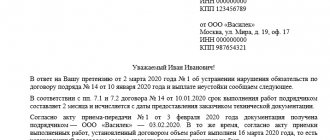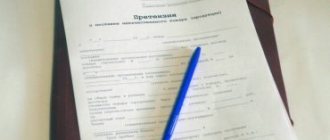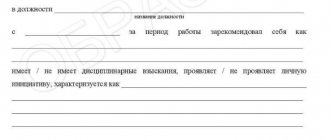In market relations, all kinds of complaints about the quality of goods and services often appear, and cases of violation of contractual obligations cannot be ruled out. Consumers, companies, organizations faced with such a situation, in order to resolve it and solve the problem, make a complaint, which reflects the essence of the claim. The document may contain requirements of a different nature.
GOST standards
A tool for regulating individual quality parameters must be present in the product produced or services provided. Standards serve to regulate relations in commercial relations of an intersectoral nature.
- 55754-2013 GOST establishes the basic provisions in the relationship between manufacturer and consumer regarding electronic products.
- 15.703-2005 GOST applies to radio-electronic goods.
- 52084-2003 GOST, which is directly related to electrical appliances for household use.
Results
Due to the fragmentation of legislative norms governing the implementation of claims and claims work, as well as the lack of legislative regulation on a number of issues, organizations adopt local regulations on claims work. Determination of the deadlines for filing and consideration of claims, the form and content of demands and claims, the sequence of application of forms of protection of violated rights must be carried out by authorized entities, taking into account the rules contained in regulatory documents and contracts.
Free trial access to the system for 2 days.
What is a complaint?
It is a document with legal force from the sphere of legal relations regulated by civil law. A complaint contains a claim from a customer or buyer, drawn up in writing and sent to the supplier (seller) of goods or services.
The document contains the reasoned demands of the claim maker to eliminate deficiencies, compensate for damages, or correspondingly reduce the price.
Dear readers! To solve your problem right now, get a free consultation
— contact the lawyer on duty in the online chat on the right or call: +7 (499) 938 6124 — Moscow and region.
+7 (812) 425 6761 — St. Petersburg and region. 8 (800) 350 8362 - Other regions of the Russian Federation You will not need to waste your time and nerves
- an experienced lawyer will solve all your problems!
Legal meaning
It lies in at least two important planes.
- The party that has suffered a loss as part of a completed transaction, by filing a complaint, seeks to resolve the conflict that has arisen pre-trial without involving coercive institutions.
- Using the opportunity to file a claim in cases where the futility of the action is obvious will serve as evidence of the peaceful intentions of the injured party during further legal proceedings.
In the field of trade relations defined by the framework of the free market, the possibility of objections to low-quality goods or violations in the provision of services has the meaning of additional measures of influence on the negligent party to the contract.
The complaint is of an internal corporate nature and gives the seller the opportunity to eliminate the violations without additional sanctions and unnecessary expenses under the terms of bilateral agreements, without involving government measures.
Why and in what cases is it compiled?
The grounds for filing complaints during the warranty period of operation of equipment (equipment) may be as follows:
- Non-compliance of the product with the provisions of the agreement for any reason.
- Insufficient delivery of the subject of the contract, malfunction of the main product, defective packaging (if this reduces the consumer properties of the item).
- Identification of obvious violations of the requirements of the relevant GOSTs, technical specifications or industry standards in the product.
- Uncoordinated change in the price of a product or delivery.
The reason for filing a protest, in most cases, is ignoring the provisions of the concluded agreement.
Any party to the contract has the right to draw up a document. Its meaning is an attempt to pre-trial resolve conflicts that have arisen without lengthy and costly procedures associated with involving a third party in resolving the dispute.
Kinds
A document can be written and presented on various grounds. Any violation of the terms of the agreement previously reached by the parties to the transaction entails a complaint.
Main types of complaints:
- provision of low quality services;
- violation of contract provisions;
- defective goods received by the buyer;
- inaccurate information provided by the manufacturer on the consumer label or in the accompanying documents for the product;
- damage or lack of necessary packaging, which affects the price of the subject of the agreement;
- lack of information in product documents regarding basic consumer properties;
- incompleteness of complex products, inadequate quality of components of the delivery set.
Differences between a complaint and a claim
There is no significant difference: both are called upon to report violated provisions of the contract, defects in the product or service provided, or failure to comply with the deadlines specified in the clauses of the contract. A complaint is a special case of a claim, but the documents differ slightly in the nuances.
| Aspect | Claim | Complaint |
| Description | Protest in the form of a complaint about the unsatisfactory quality of work performed, missed deadlines, receipt of goods with signs of defect | Notification of defects in the product with a statement of the need to compensate for losses |
| Time | No restrictions | Limited by warranty period |
| Item | Questions of any nature, various conditions | Only legal relations in the field of trade |
Important! There may be a replacement of a defective product (part), a refund of funds spent on purchases, or the provision of services in full.
Why is an act drawn up?
A complaint refers to both the claim itself and the demand for its elimination. As a rule, the grounds for filing during the warranty period may be as follows:
- any non-compliance with the purchase and sale agreement or other agreement;
- incomplete delivery of goods;
- inconsistency of quality with accepted standards (GOST, TU, etc.);
- unreasonable price changes, etc.
Thus, the basis for filing a claim is usually a breach of contract. However, a complaint can also be filed in connection with a violation of accepted standards, even if this is not directly stated in the text of the main agreement.
It can be drawn up by any person in relation to any companies, organizations, associations and private citizens. In most cases, such a document is drawn up by one legal entity in relation to another.
As a rule, when drawing up a complaint report, regardless of the specific sample, it is necessary to take care of the evidence base. These are the documents attached to the claim act - these are checks, receipts, witness statements, photographic materials and others.
Procedure for presentation and satisfaction
The filing scheme is as follows: having identified a defect in the product, the buyer is obliged to notify the supplier organization (manufacturer) about it within twenty-four hours. At the same time, the operator must record the malfunction by all means and technical means available to him.
To submit an objective complaint, a commission is created from representatives of the operating company and a participant from the organization that supplies the equipment.
Having studied the nature and specifics of the manifestation of the malfunction, the commission prepares a complaint report based on the results of the work.
Drawing up the report should not exceed five days from the moment of demonstration of the defective item to the seller’s representative. The general procedure for presentation, approval and satisfaction cannot exceed thirty days.
In this case, the customer’s claim is considered satisfied if the defective product is eliminated.
The second solution is a manager for handling claims with suppliers.
A separate specialist is able to resolve all (!) claim issues. I’m not afraid of the word “everything,” because that’s what happens in practice. In this case, regulation is also needed. The only difference is that the deadlines, principles of document flow, and his powers when negotiating with suppliers are prescribed for the manager of claims management with suppliers. And this same MPPR is the owner of the business process for conducting claims work with suppliers. All other participants in the process, within the established time frame, simply provide or receive the necessary data to the manager (or from the manager) regarding complaints.
Pros:
- claims are processed, the volume of losses is reduced
- the complaints processing system is transparent, control points are set, there is one, but everyone knows, responsible and authorized person for the work
- The efficiency of the supplier management system increases
- accounting of goods and finances in order
- Purchasing, sales, and warehouse specialists, on the one hand, are freed from routine work with claims to suppliers, on the other hand, they can at any time receive information about the status of a particular claim
- The time resource of key procurement specialists is freed up to solve higher-level functional tasks
- the balance of cross-functional interaction is maintained
- deviations from the system are recorded, the system is constantly improved
Minuses:
lack of control over the execution of a business process will reduce efforts to NO
How the business process for handling claims with suppliers is formed
The business process for handling claims, as a rule, is formed by the business technologist of the enterprise. The head of any department cannot cope with this work alone. Here we need studies of working time spent on solving problems in the process, and interviews with specialists from different departments, and many more interesting things...
If there is no business technologist, you can create a working group of department heads involved in the process. The main thing is to make the process manageable, efficient and environmentally friendly.
Important: do not forget to invite accounting and IT departments to the working group. Without their approval, the system will not start
The accountant will be introduced to the correct methods of closing claims and document flow. Programmers will suggest the optimal way to automate the process.
Remember that product defects can be detected at different stages of product distribution:
- upon acceptance
- during storage and during internal movements
- during pre-sale preparation
Important:
develop parameters for separating product defects that arise due to the fault of enterprise personnel and the fault of the supplier; pay special attention to the timing at each stage of the business process for handling claims with suppliers; automate the process as much as possible so that it is transparent and controllable; create templates for letters of claim to suppliers for frequently occurring situations , so that procurement specialists do not waste such valuable time on a set of platitudes “dear”, “a supply agreement has been concluded between our companies”, “please provide an answer no later”, and so on.
How to write correctly
The legislation does not have established models or forms for writing complaint letters. When filling out a document, it is important to follow the rules established for business correspondence.
Who writes the document and when?
Must be made by the buyer or his representative during the warranty period of use within twenty-four hours from discovery of the defect.
Rules for compilation and design
The submitted document must contain:
- Details of the recipient and sender of the complaint, full name of officials, document submitter, addresses and contact numbers.
- A list of complaints about the quality of the purchased product or service provided. In this part, it is necessary to briefly and competently state the essence of the complaint, list point by point the signs of the identified defect, the provisions of the contract in respect of which violations were committed, details (date of conclusion and number of the agreement).
- Proposing ways and possible options for resolving the conflict. This may be a replacement of a low-quality product, a refund of the purchase amount, partial compensation for losses as a percentage of the contract value and the difference in the price of the product, or full repayment of the damage that has occurred.
- Description of applications.
- Date of preparation and signature of the initiator of the complaint.
Sample claim for defective goods
To the manager (name of organization, individual entrepreneur)
Address:
Applicant: (last name, first name, patronymic)
Address:
Telephone:
CLAIM
for low-quality goods
"___"_______G. in the store (specify name) located at:___, I made a purchase (name, brand, model) worth ________ rubles.
The fact of purchase is confirmed (cash receipt, sales receipt, bank statement, warranty card, words of a witness).
The product was used correctly according to the instructions.
The product turned out to be of inadequate quality (describe the shortcomings).
In accordance with Articles 18, 19, 22 of the Law “On Protection of Consumer Rights,” I refuse to execute the sales contract and ask (select one of the requirements):
- replace with a product of the same brand and model;
- replace with another model, brand with price recalculation;
- to reduce the price;
- make repairs at the seller’s expense or reimburse repair costs;
- terminate the purchase and sale agreement and return the money paid in the amount of ___ rubles.
If my claim is not satisfied, I will be forced to go to court with the above requirements, as well as compensation for the losses caused to me, payment of a penalty and recovery of moral damages.
Please send your response in writing within 10 days.
In the case of an examination, in accordance with paragraph 5 of Art. 18 of the Law on the Protection of Consumer Rights, please notify me of the place and time of the inspection.
Enclosure: (copies of documents confirming purchase). Date of. Signature.
How a letter of complaint is processed
The correct reaction to receiving a letter of complaint from a client is important.
If the seller fully and unconditionally admits his guilt in the shortcomings discovered by the buyer, he endorses the received request and immediately begins to eliminate the harmful consequences.
Replacing a low-quality product, eliminating defects or compensating for material damage can completely settle the dispute without involving the courts in resolving it.
Know! If we imagine that the manufacturer or seller categorically disagrees with the buyer’s arguments, he can ignore the client’s request without attention and wait for a trial on aspects of the conflict that has arisen.
Operating rules
The larger the company, the more important customer loyalty is to it. Timely resolution of conflicts is a way to preserve funds invested in the brand and advertising of products, works and services. There are no universal recipes. A brief scheme for handling a claim is as follows.
Stage
1 Accept the complaint
Determine the type: Justified (the service was provided poorly, personnel error, defective product, system failure, etc.). Unreasonable (the rules for using the product have not been studied, the terms of service are misunderstood, incorrect actions of the consumer, etc.). Provocative - used to receive bonuses, discounts, payments by experienced or scandalous applicants.
2. Analyze it
Determine the importance and urgency of the review: Voiced within the applicant’s close circle. This entails the risk of quickly spreading negative information among his friends. Expressed directly to the seller (performer). Received by third-party organizations - regulatory services, inspection organizations, popular Internet resources.
3 Give the client an initial response The complaint should not be ignored
The consultant must know how to conduct a dialogue and what needs to be told to the client when registering a claim to localize the conflict: listen carefully; make sure that the situation is interpreted correctly and make it clear to the applicant that he is understood correctly; recognize the justice of the expressed emotions, sympathize; apologize; offer solutions to the problem; agree and carry out what is planned personally or monitor implementation.
4 Analyze the situation
If the claim cannot be resolved immediately: Register the claim. Set a deadline for providing a response. It can be normative or arbitrary, but reasonable.
5 Prepare your answer
Formulate a way to resolve the conflict and prepare special proposals.
6 Make adjustments Based on the claims experience, make changes to the quality of production of goods and provision of services (performance of work).
Useful rules:
- Prevent consumer dissatisfaction.
- Don’t be afraid of complaints; honest work with claims and complaints helps you see “bottlenecks” and avoid new losses in the future.
- The best way to solve problems is personal communication.
Principles of work:
- all discontent will be resolved on the spot at reasonable but minimal costs;
- the complaint remains within the organization, the consumer (buyer) does not take it to the control authorities, the media and social networks.
What you definitely shouldn't do:
- do not allow inattentive and rude treatment of clients;
- don't follow their lead if they are wrong or want too much compensation.
Result
Practice testifies in favor of the consumer exercising the right to receive, as a result of completed acts of purchase and sale, high-quality products. Trade enterprises, like manufacturers, do not want to lose their name in connection with individual protests. It is rare to find a seller who is able to bring the process of resolving minor disputes to court.
Dear readers! To solve your problem right now, get a free consultation
— contact the lawyer on duty in the online chat on the right or call: +7 (499) 938 6124 — Moscow and region.
+7 (812) 425 6761 — St. Petersburg and region. 8 (800) 350 8362 - Other regions of the Russian Federation You will not need to waste your time and nerves - an experienced lawyer will solve all your problems! Or describe the situation in the form below:
The impact of the “claims” business process on procurement efficiency
1. When the business process begins to work “automatically,” set standards for the claims manager and procurement specialists, for example:
- Share of untimely closed claims (suppliers sometimes delay responding, but this should not become the rule)
- Allowed recycling amount per month
- Other
2. Update the business process and document flow at least once a year: in a situation where everything is changing quickly, static behavior is contraindicated.
3. Based on the statistics received, make adjustments to the supplier’s profile: which number or amount of claims are acceptable and which are not. In which case do we have the right to change the status of the supplier “main” to “alternative”.
And so on…








